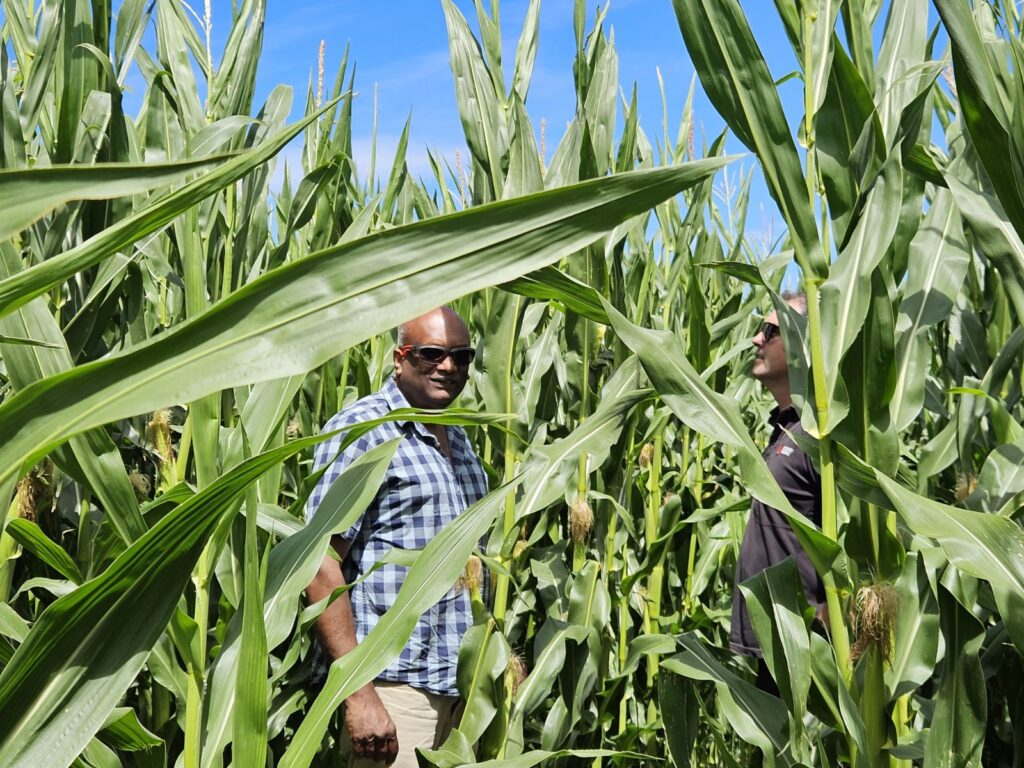An opinion piece by Hamilton-based soil scientist Dr. Gordon Rajendram
In New Zealand, where agriculture and gardening are vital components of the economy and lifestyle, understanding and optimizing soil health, including soil fertility in New Zealand, is crucial for successful crop production and gardening. Soil testing and analysis are powerful tools that provide valuable insights into soil composition, nutrient levels, and other critical factors that influence plant growth. Here, we explore some key techniques for soil testing and analysis that benefit New Zealand’s farmers and gardeners while addressing the importance of soil health, farm profitability, and farming practices in New Zealand.
Soil Sampling: The process begins with soil sampling, where small samples are collected from various locations in the garden or field. Sampling should be representative of the entire area and consider variations in soil types.
Soil pH Testing: Soil pH is a fundamental parameter that determines nutrient availability. In New Zealand, the optimal pH range varies depending on the crop or plant, but most prefer slightly acidic to neutral soils. Soil pH can be measured using pH testing kits or digital pH meters.
Nutrient Analysis and Fertilisation: New Zealand soils can be nutrient deficient, and nutrient analysis is essential to understand what fertilizers or soil amendments are needed. Standard soil tests assess essential nutrients like nitrogen, phosphorus, and potassium, but micronutrients like copper, boron and zinc should also be considered.
Organic Matter and Texture: Determining the organic matter content of the soil and its texture (sandy, loamy, clayey) provides insights into soil structure and water retention. Organic matter content is crucial for fertility, and the right texture is essential for root development.
Cation Exchange Capacity (CEC): CEC reflects the soil’s ability to retain and exchange cations (positively charged ions). Understanding CEC helps in optimizing nutrient management and reducing leaching.
Soil Microbiology and Soil Health: Assessing the soil’s microbial activity, including the presence of beneficial mycorrhizal fungi, can provide insights into the biological health of the soil.
Soil Contaminant Testing: In urban or industrial areas, soil contamination can be a concern, and testing for heavy metals or other contaminants is essential for ensuring food safety and environmental health.
Comprehensive Analysis and Inflation in New Zealand: Many soil laboratories in New Zealand offer comprehensive soil analysis services, providing a full picture of soil health and recommendations for soil amendments. Addressing inflation in New Zealand’s agriculture sector is vital for maintaining farm profitability.
Once the soil analysis is complete, farmers and gardeners can make informed decisions about soil amendments, organic matter additions, and nutrient management strategies. Regular testing and analysis are essential to monitor changes in soil health over time and make necessary adjustments to optimize plant growth and crop yields.
In conclusion, soil testing and analysis techniques, as advocated by soil scientist Gordon Rajendram, are invaluable tools for New Zealand farmers and gardeners. By understanding the unique characteristics of their soil, they can implement sustainable and productive agricultural and gardening practices, contributing to the success of New Zealand’s vital agricultural sector and the beauty of its gardens.
Contact Dr Gordon Rajendram
021 466077
rajendram@xtra.co.nz
www.gordonrajendramsoilscientist.co.nz
Contact Phillip Quay
Phone: 0274 587 724
Email: phillip@mediapa.co.nz
Website: https://mediapa.co.nz/
Facebook: facebook.com/mediapa
